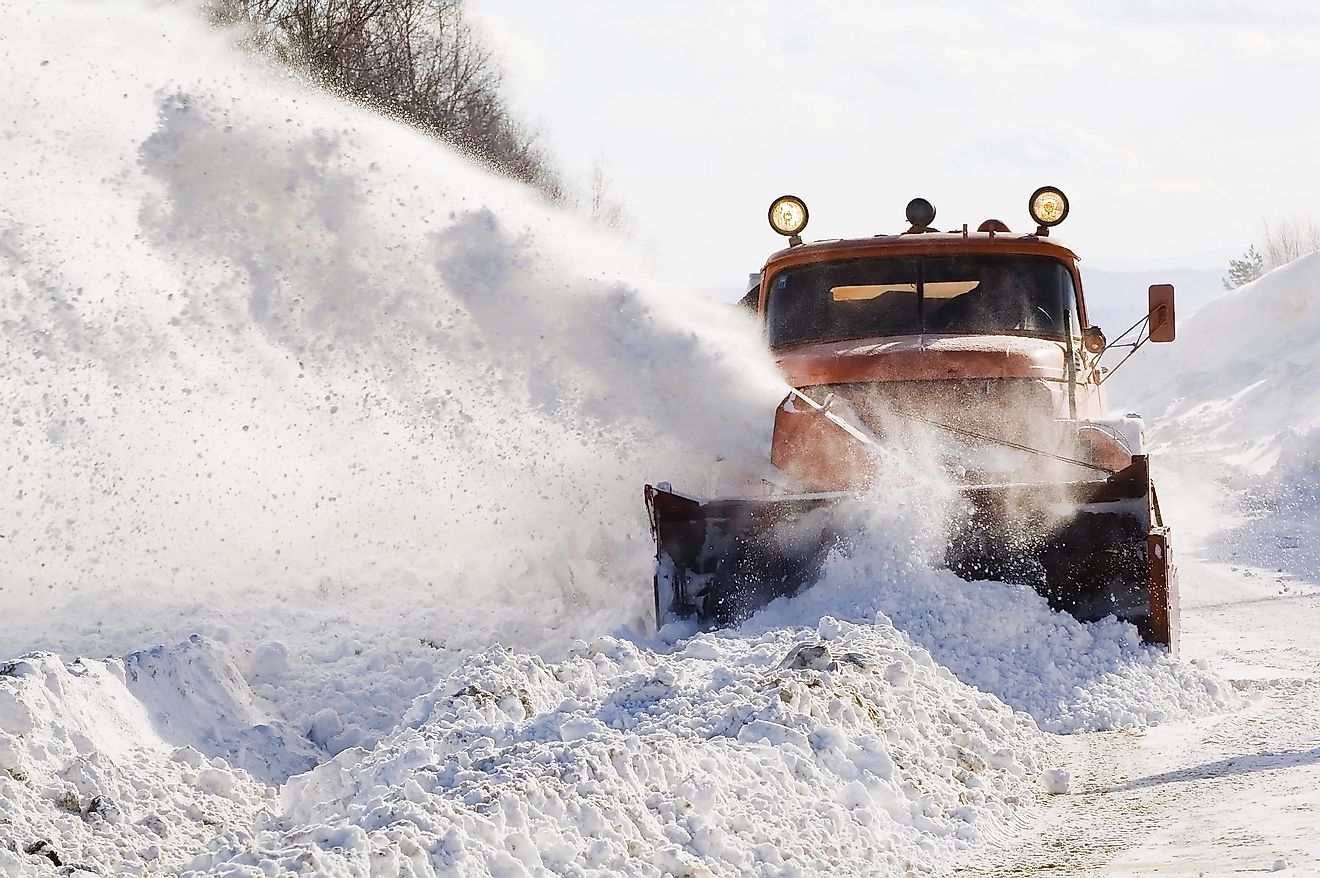List Of The Worst Winter Storms In America By Cost

There's no question that natural disasters are among the most devastating occurrences that take place in the United States on a regular basis. Not only are mortality rates increased substantially because of them, but the economic damages they inflict are devastating to the people and places left in the wake of these environmental calamities as well. Not surprisingly, the season impacting people the most in terms of weather-related damages is winter. The memorable "Storm of the Century", also known as the "Great Blizzard of 1993", which took place during mid-March 1993, is an example of one such notable winter weather event. With spring fast approaching, it left a wide swath of destruction across Eastern United States, with damage costs estimated to total upwards of $5 billion USD. Such storms have continued to plague the US almost every year, though to a somewhat lesser degree. With insured losses averaging $1.5 billion USD annually, many ask whether they need to take extra precaution to protect themselves and their properties from erratic winter weather.
Regional Climatic Variances
Thankfully, some methods to the madness of measuring and preparing for natural disasters have come into existence in the U.S. A particularly important factor is geographical location, as certain regions are more susceptible to certain natural disasters than others due to regional climate patterns. For example, the infamous "Tornado Alley", covering Nebraska, Kansas, Oklahoma, and northern Texas, is far more likely to experience these deadly spiraling winds than are Washington or Oregon. Likewise, the West Coast of the U.S. suffers from a higher risk of earthquakes than does the the Eastern Coast, which is itself more vulnerable to frequent hurricanes. Although these conditions are threats year-round, many states suffer much more damage during the winter than other seasons due to atmospheric changes unique to this time of year.
Winter: A Force to Be Reckoned With
The increased weather damage during winter becomes is more marked in certain U.S. areas than others. Statistics show that states like Alabama and Connecticut, among others in the eastern U.S. with overlapping risk of both winter and tropical storms, consistently endure the heaviest losses resulting from winter weather, with each suffering over $100 million USD in storm damages year after year. The time period in which the heaviest storms occur are typically at the beginning and end of winter, but rarely in between. This is due to the marked temperature changes characteristic of these times of the year, which make for ideal atmospheric opportunities to produce hurricane and blizzard events. Consequently, most losses recorded from such disasters tend to occur in early January and April. Although temperature swings are less impactful to weather on the West Coast, as the ever-present risk of seismic activity remains unaffected by seasonal changes.
Dense Populations Can Intensify Financial Losses
The climate pattern of geographical locations, while significant, is not the only factor that influences statistics on winter weather-related damages. When looking at population density, it's clear that the Eastern Seaboard of the U.S. is generally more densely populated than is the half of the country west of the Mississippi. Because so much more infrastructure exists to be damaged in the same areas more prone to hurricane activity, it's understandable why losses can be so high for these areas in the winter. Generally, those years when extreme weather events tend to occur more frequently along the East Coast consequently register higher total winter weather-related damages in total.
Should Winter Weather Damages Concern You?
With all that in mind, you may wonder whether you are at a high risk of incurring winter weather-related damages because of where you live. Whether or not you should be concerned by potential losses you may incur from winter weather events each year, depends on a number of factors, you may want to give this issue some extra consideration if you have children, are a frugal budgeter, looking to purchase a new home, or shopping for home insurance. On average, though, most need not worry. After all, we hopefully won’t be due for another "Storm of the Century" for some time to come.
List Of The Worst Winter Storms In America By Cost
| Rank | U.S. Winters | Million U.S. Dollars |
|---|---|---|
| 1 | Blizzard (Mar. 11-14, 1993) | 5,000 |
| 2 | Winter damage (Feb. 10-12, 1994) | 3,000 |
| 3 | Winter storm (Dec. 10-13, 1992) | 3,000 |
| 4 | Winter damage, cold wave (Jan. 5-8, 2014) | 2,500 |
| 5 | Winter storm, tornadoes, floods (Apr. 13-17, 2007) | 2,000 |
| 6 | Winter storm (Apr. 7-11, 2013) | 1,500 |
| 7 | Winter damage (Jan. 31-Feb. 6, 1996) | 1,500 |
| 8 | Winter storm, snowstorms,winter damage (Jan 31-Feb. 3, 2011) | 1,300 |
| 9 | Snowstorm (Jan. 6-9, 1996) | 1,200 |
| 10 | Blizzard, winter damage (Feb. 24-25, 2013) | 1,000 |
| 11 | Winter storm (Jan. 4-9, 2008) | 1,000 |
| 12 | Winter damage, cold wave (Jan. 17-20, 1994) | 1,000 |
| 13 | Winter storm (Jan. 1-4, 1999) | 1,000 |
| 14 | Winter damage, cold wave (Dec. 17-30, 1983) | 1,000 |
| 15 | Winter storm, winter damage (Oct. 28-31,2011) | 900 |











